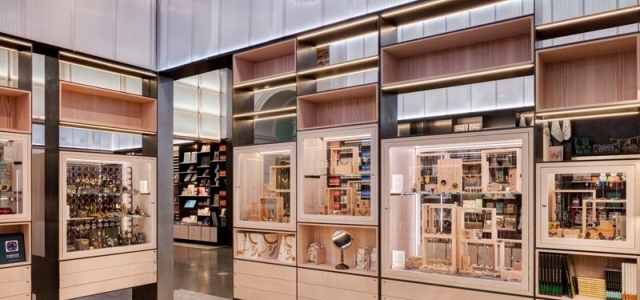
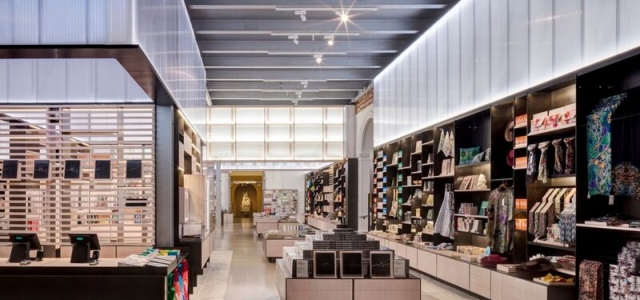
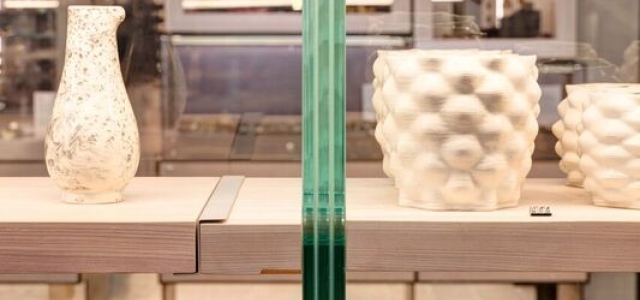

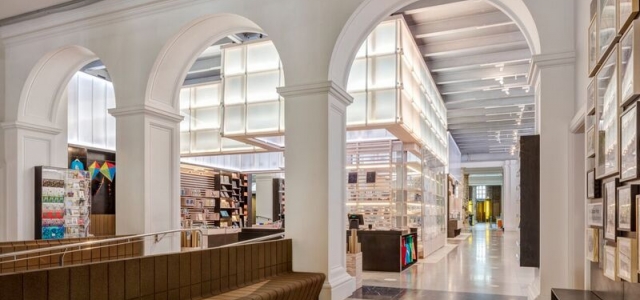
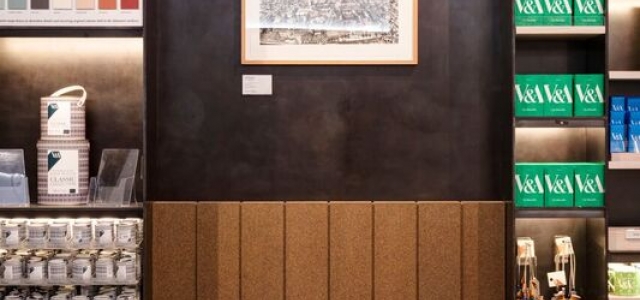
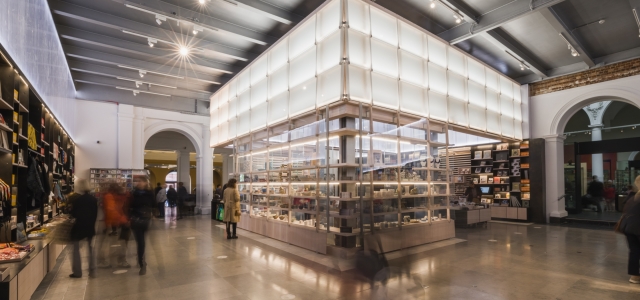
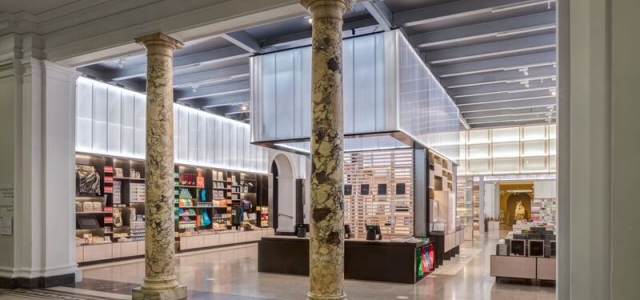
The V&A has unveiled its remodelled main shop in the centre of the museum, having undertaken the first redesign of the space in 11 years. The aim is to reflect the ethos of craftsmanship and manufacture that has always been central to the museum, while also creating a beautifully designed space to inspire visitors.
The shop features an area for visitors to view the curated Custom Prints collection, alongside a jewellery pavilion and the ‘pocket studio’ which will focus on a different material every four months, starting with ceramics. The shop will also continue its legacy of working with talented independent designers, including 1882, Nat Thakur and Kristjana Williams, who have created a number of beautiful exclusive ranges.
The plans for the redesign began in 2016 when an international competition was launched to appoint a designer to remodel the space. The contract was won by Friend and Co Architects, working with Rashid Ali Projects and Millimetre Design, a collective of designers and makers who have worked with the V&A staff to create a space that combines function, form and flexibility, with a strong emphasis on revealing the materials used in the project, reflecting the history of the building, which was first opened as the Museum of Manufactures.
Engaging with new creative methods, the designers and in house team have sourced custom-designed ceramic tiles for the floor of the shop, featuring a pattern taken from the design of a Chinese bowl in the V&A collection. The tiles were made with clay using a specially adapted 3D printer at Grymsdyke Farm, a design research facility in the Chilterns.
Comments Philippa Simpson, Project Director, ‘The redevelopment of the shop is part of the museum’s FuturePlan project, an ambitious programme endeavouring to update and modernise facilities while revealing and restoring the beautiful original building. More than 85% of the public spaces in the museum have been transformed over the last 15 years, allowing spaces to be used in new ways, contemporary opportunities for curation and display, and improved access for visitors.’
